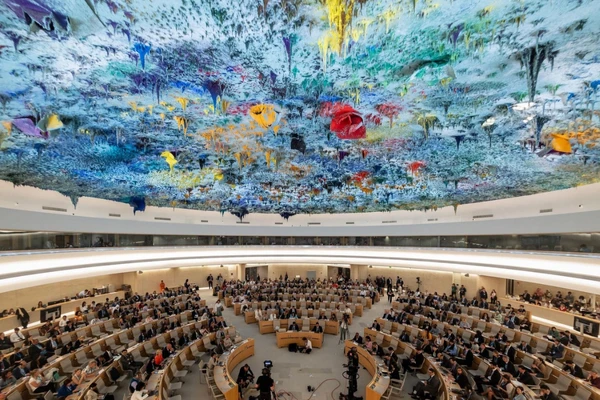Intersex Rights Resolution adopted by the UNHRC aims to protect the rights of intersex individuals and combat discrimination.
About the resolution:
- The UNHRC adopted a resolution to protect the rights of intersex people, spearheaded by Finland, South Africa, Chile, and Australia.
- This resolution is the first of its kind and signifies a landmark moment for human rights.
The Resolution’s Objectives:
- The resolution calls upon states to combat discrimination, violence, and harmful practices against intersex individuals.
- It urges states to address the root causes of these issues and ensure the highest attainable standard of physical and mental health for intersex people.
- The resolution requests the U.N. High Commissioner for Human Rights to publish a report examining discriminatory laws, violence, and harmful practices against individuals with innate variations in sex characteristics worldwide.
Understanding Intersexuality:
- Intersex individuals are born with sex characteristics that do not conform to traditional binary notions of male or female.
- These characteristics may include variations in sexual anatomy, reproductive organs, hormonal patterns, and chromosomal patterns.
- Intersex individuals may identify with any gender identity or sexual orientation.
Statistics and Demographics:
- Experts estimate that up to 1.7% of the population is born with intersex traits, highlighting the significance of addressing their rights.
Key Issues Faced by Intersex People:
- Intersex individuals face human rights violations due to societal stereotypes and pathologization of their identities.
- They encounter challenges such as infanticide, coerced medical interventions, discrimination, and lack of legal recognition.
Other key facts:
- Intersex people are distinct from transgender individuals.
- Transgender individuals are born with a body that possesses clear sexual characteristics (either male or female), but these characteristics do not align with their gender identity.
About UNHRC:
- The Human Rights Council, an intergovernmental body within the United Nations system, is tasked with enhancing the promotion and safeguarding of human rights worldwide.
- Established in 2006 by the General Assembly, it succeeded the United Nations Commission on Human Rights.
- It addresses instances of human rights violations and provides recommendations to address them.
- It is responsible for strengthening the promotion and protection of human rights around the globe.
- The Council is made of 47 Member States, which are elected by the majority of members of the General Assembly of the United Nations through direct and secret ballot.
- India was re-elected to the United Nations Human Rights Council (UNHRC) for the 2022-2024 term in 2021.
Key Mandate:
- Reviews the human rights records of all UN Member States through the Universal Periodic Review.
- Authorizes commissions of inquiry and fact-finding missions to investigate war crimes and crimes against humanity, among other issues.
Ref:Source
| UPSC IAS Preparation Resources | |
| Current Affairs Analysis | Topperspedia |
| GS Shots | Simply Explained |
| Daily Flash Cards | Daily Quiz |



